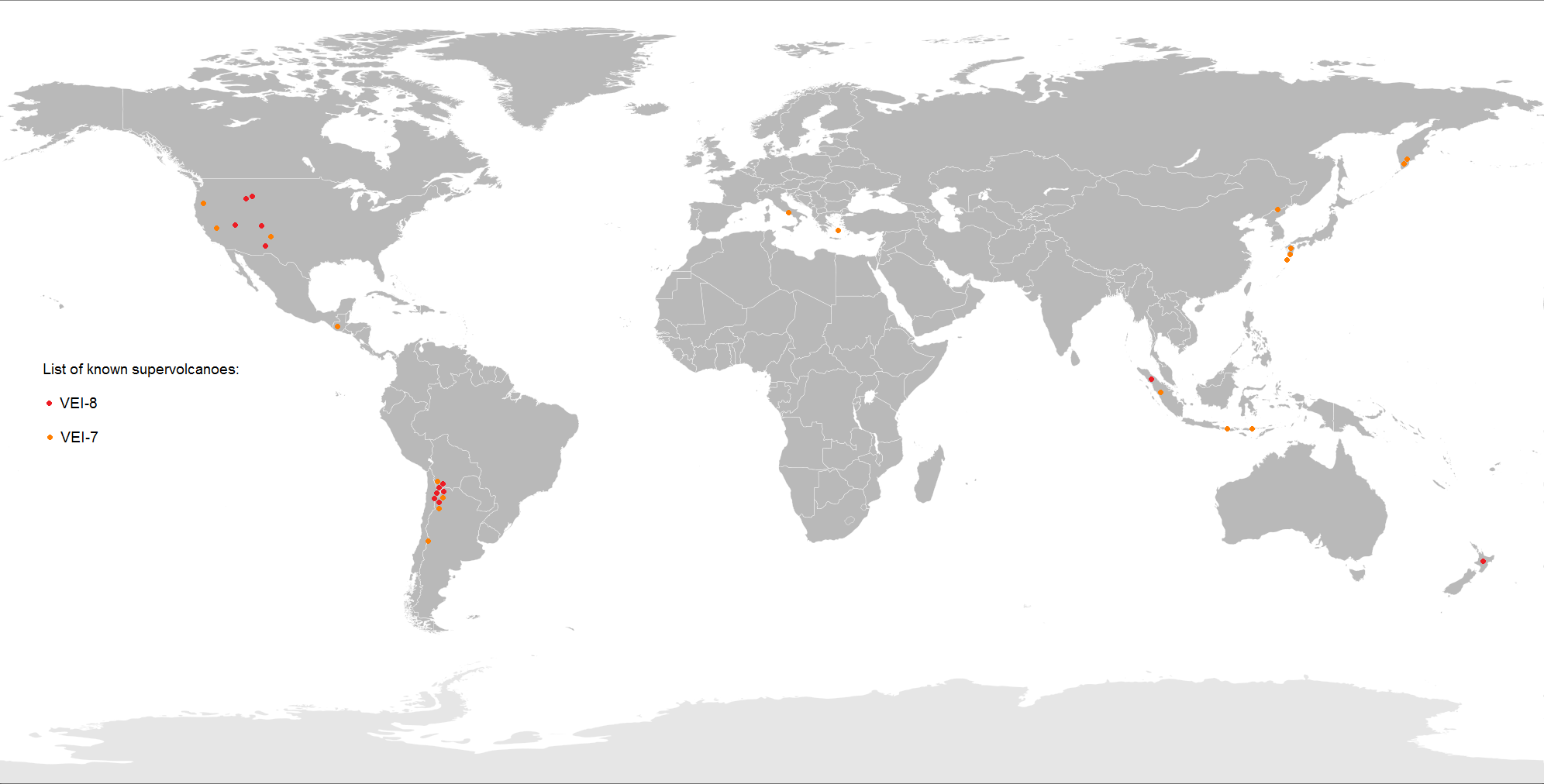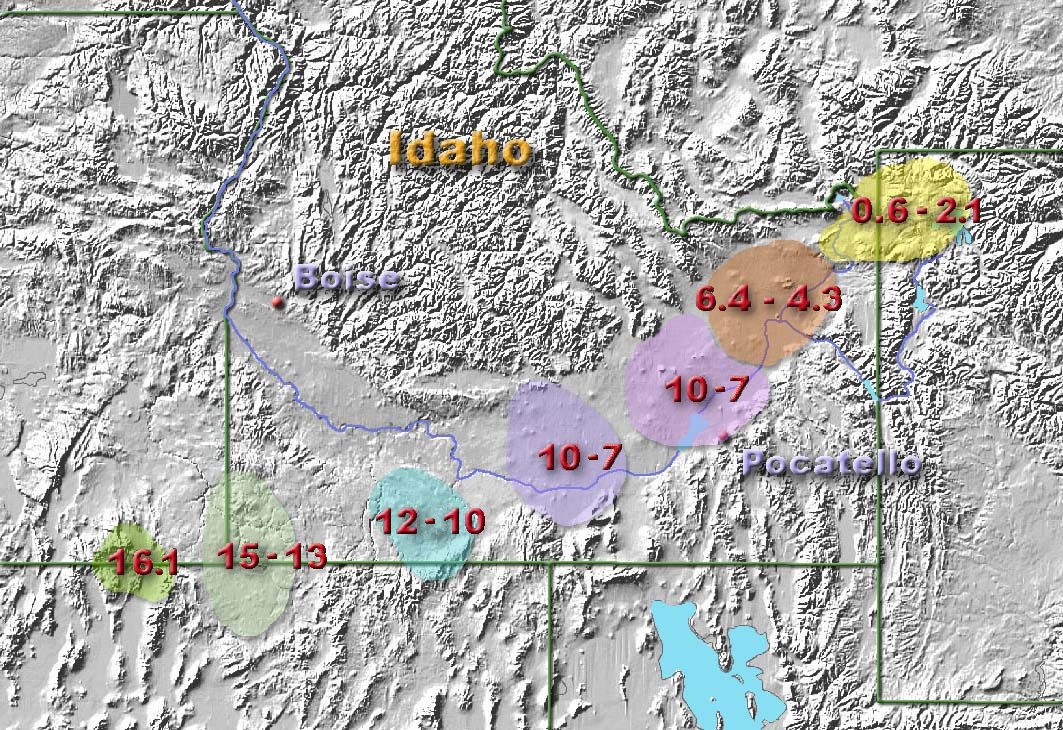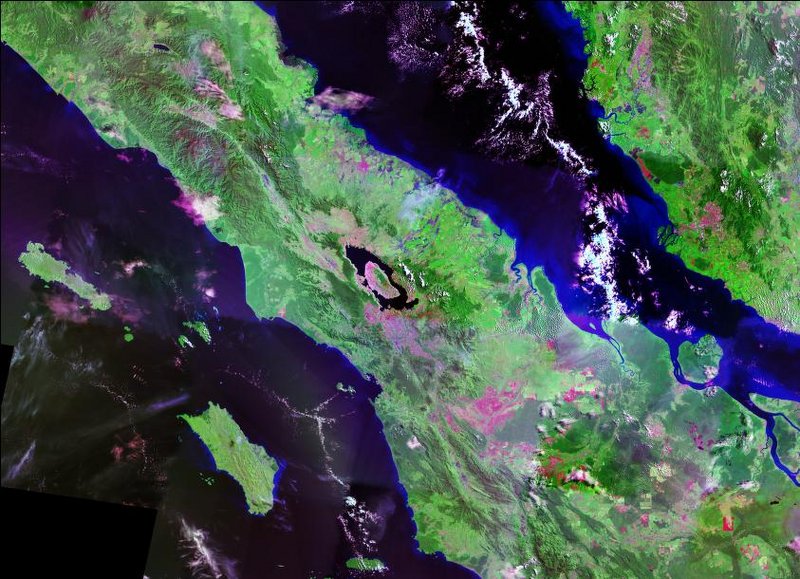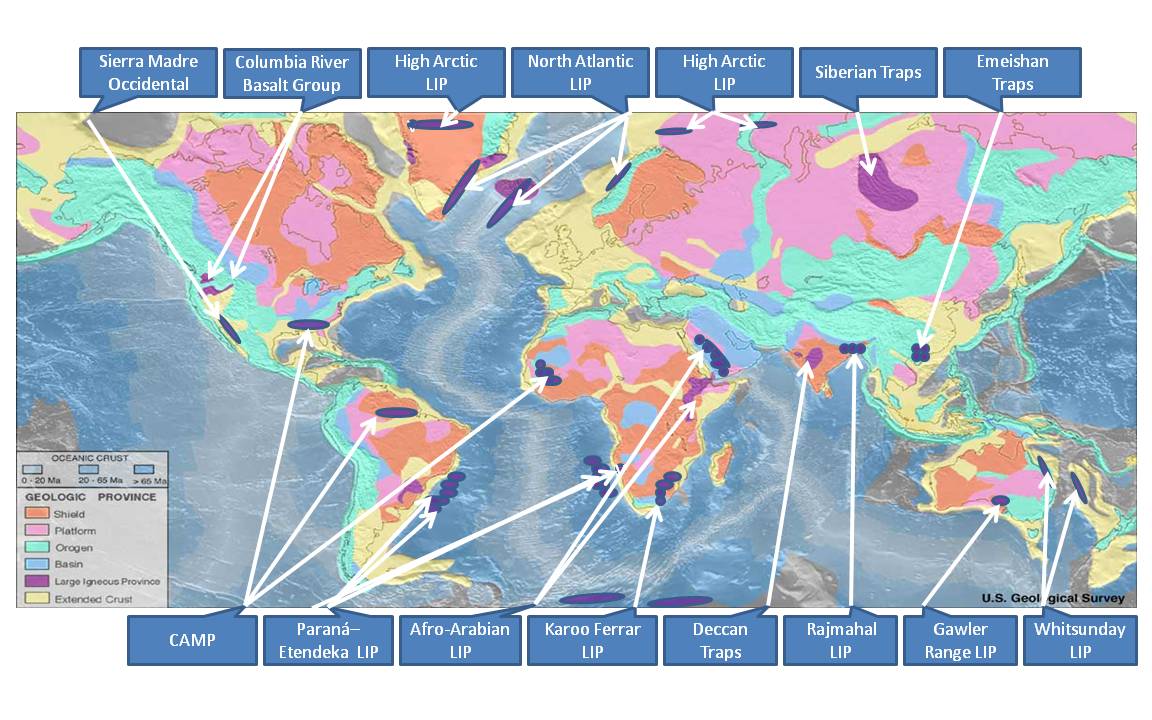Supervolcano on:
[Wikipedia]
[Google]
[Amazon]
 A supervolcano is a
A supervolcano is a 

 Supervolcanoes occur when
Supervolcanoes occur when
 Large igneous provinces, such as
Large igneous provinces, such as
File:Taupo.Volcanic.Zone.North.Island.NZ.JPG, Volcano, lake, and caldera locations in the Taupō Volcanic Zone
Overview and Transcript of the original BBC program
* ttps://pubs.usgs.gov/fs/2005/3024/ USGS Fact Sheet – Steam Explosions, Earthquakes, and Volcanic Eruptions – What's in Yellowstone's Future?
Scientific American's The Secrets of Supervolcanoes
Supervolcano eruption mystery solved
BBC Science, 6 January 2014 {{Authority control Volcanology Geological hazards Volcanic landforms Doomsday scenarios Future problems Lists of volcanic eruptions
 A supervolcano is a
A supervolcano is a volcano
A volcano is commonly defined as a vent or fissure in the crust of a planetary-mass object, such as Earth, that allows hot lava, volcanic ash, and gases to escape from a magma chamber below the surface.
On Earth, volcanoes are most oft ...
that has had an eruption with a volcanic explosivity index (VEI) of 8, the largest recorded value on the index. This means the volume of deposits for such an eruption is greater than .

 Supervolcanoes occur when
Supervolcanoes occur when magma
Magma () is the molten or semi-molten natural material from which all igneous rocks are formed. Magma (sometimes colloquially but incorrectly referred to as ''lava'') is found beneath the surface of the Earth, and evidence of magmatism has also ...
in the mantle rises into the crust but is unable to break through it. Pressure builds in a large and growing magma pool until the crust is unable to contain the pressure and ruptures. This can occur at hotspots (for example, Yellowstone Caldera) or at subduction zones (for example, Toba).
Large-volume supervolcanic eruptions are also often associated with large igneous provinces, which can cover huge areas with lava and volcanic ash
Volcanic ash consists of fragments of rock, mineral crystals, and volcanic glass, produced during volcanic eruptions and measuring less than 2 mm (0.079 inches) in diameter. The term volcanic ash is also often loosely used to r ...
. These can cause long-lasting climate change
Present-day climate change includes both global warming—the ongoing increase in Global surface temperature, global average temperature—and its wider effects on Earth's climate system. Climate variability and change, Climate change in ...
(such as the triggering of a small ice age) and threaten species with extinction. The Oruanui eruption of New Zealand's Taupō Volcano (about 25,600 years ago) was the world's most recent VEI-8 eruption.
Terminology
The term "supervolcano" was first used in a volcanic context in 1949. Its origins lie in an early 20th-century scientific debate about the geological history and features of the Three Sisters volcanic region ofOregon
Oregon ( , ) is a U.S. state, state in the Pacific Northwest region of the United States. It is a part of the Western U.S., with the Columbia River delineating much of Oregon's northern boundary with Washington (state), Washington, while t ...
in the United States. In 1925, Edwin T. Hodge suggested that a very large volcano, which he named Mount Multnomah, had existed in that region.Subsequent research proved that each peak of the Three Sisters was formed independently, and that Mount Multnomah never existed. He believed that several peaks in the Three Sisters area were remnants of Mount Multnomah after it had been largely destroyed by violent volcanic explosions, similarly to Mount Mazama. In his 1948 book ''The Ancient Volcanoes of Oregon'', volcanologist Howel Williams ignored the possible existence of Mount Multnomah, but in 1949 another volcanologist, F. M. Byers Jr., reviewed the book, and in the review, Byers refers to Mount Multnomah as a "supervolcano".
More than fifty years after Byers' review was published, the term ''supervolcano'' was popularised by the BBC
The British Broadcasting Corporation (BBC) is a British public service broadcaster headquartered at Broadcasting House in London, England. Originally established in 1922 as the British Broadcasting Company, it evolved into its current sta ...
popular science television program ''Horizon
The horizon is the apparent curve that separates the surface of a celestial body from its sky when viewed from the perspective of an observer on or near the surface of the relevant body. This curve divides all viewing directions based on whethe ...
'' in 2000, referring to eruptions that produce extremely large amounts of ejecta.
The term ''megacaldera'' is sometimes used for caldera
A caldera ( ) is a large cauldron-like hollow that forms shortly after the emptying of a magma chamber in a volcanic eruption. An eruption that ejects large volumes of magma over a short period of time can cause significant detriment to the str ...
supervolcanoes, such as the Blake River Megacaldera Complex in the Abitibi greenstone belt of Ontario
Ontario is the southernmost Provinces and territories of Canada, province of Canada. Located in Central Canada, Ontario is the Population of Canada by province and territory, country's most populous province. As of the 2021 Canadian census, it ...
and Quebec
Quebec is Canada's List of Canadian provinces and territories by area, largest province by area. Located in Central Canada, the province shares borders with the provinces of Ontario to the west, Newfoundland and Labrador to the northeast, ...
, Canada.
Though there is no well-defined minimum explosive size for a "supervolcano", there are at least two types of volcanic eruptions that have been identified as supervolcanoes: large igneous provinces and massive eruptions.
Large igneous provinces
 Large igneous provinces, such as
Large igneous provinces, such as Iceland
Iceland is a Nordic countries, Nordic island country between the Atlantic Ocean, North Atlantic and Arctic Oceans, on the Mid-Atlantic Ridge between North America and Europe. It is culturally and politically linked with Europe and is the regi ...
, the Siberian Traps, Deccan Traps, and the Ontong Java Plateau, are extensive regions of basalt
Basalt (; ) is an aphanite, aphanitic (fine-grained) extrusive igneous rock formed from the rapid cooling of low-viscosity lava rich in magnesium and iron (mafic lava) exposed at or very near the planetary surface, surface of a terrestrial ...
s on a continental scale resulting from flood basalt
A flood basalt (or plateau basalt) is the result of a giant volcanic eruption or series of eruptions that covers large stretches of land or the ocean floor with basalt lava. Many flood basalts have been attributed to the onset of a hotspot (geolo ...
eruptions. When created, these regions often occupy several thousand square kilometres and have volumes on the order of millions of cubic kilometers. In most cases, the lavas are normally laid down over several million years. They release large amounts of gases.
The Réunion hotspot produced the Deccan Traps about 66 million years ago, coincident with the Cretaceous–Paleogene extinction event
The Cretaceous–Paleogene (K–Pg) extinction event, also known as the K–T extinction, was the extinction event, mass extinction of three-quarters of the plant and animal species on Earth approximately 66 million years ago. The event cau ...
. The scientific consensus is that an asteroid impact was the cause of the extinction event, but the volcanic activity may have caused environmental stresses on extant species up to the Cretaceous–Paleogene boundary. Some scientists have hypothesised that the volcanism around the Deccan Traps could have been intensified by the Chicxulub impact, which would have been close to the antipodal point of the Traps at that time.
Additionally, the largest flood basalt event (the Siberian Traps) occurred around 250 million years ago and was coincident with the largest mass extinction in history, the Permian–Triassic extinction event, although it is unknown whether it was solely responsible for the extinction event.
Such outpourings are not explosive, though lava fountains may occur. Many volcanologists consider Iceland
Iceland is a Nordic countries, Nordic island country between the Atlantic Ocean, North Atlantic and Arctic Oceans, on the Mid-Atlantic Ridge between North America and Europe. It is culturally and politically linked with Europe and is the regi ...
to be a large igneous province that is currently being formed. The last major outpouring occurred in 1783–84 from the Laki fissure, which is approximately long. An estimated of basaltic lava was poured out during the eruption (VEI 4).
The Ontong Java Plateau has an area of about , and the province was at least 50% larger before the Manihiki and Hikurangi Plateaus broke away.
Massive explosive eruptions
Volcanic eruptions are classified using the volcanic explosivity index. It is alogarithmic scale
A logarithmic scale (or log scale) is a method used to display numerical data that spans a broad range of values, especially when there are significant differences among the magnitudes of the numbers involved.
Unlike a linear Scale (measurement) ...
, and an increase of one in VEI number is equivalent to a tenfold increase in volume of erupted material. VEI 7 or VEI 8 eruptions are so powerful that they often form circular calderas rather than cones because the downward withdrawal of magma causes the overlying rock mass to collapse into the empty magma chamber beneath it.
Known super eruptions
Based on incomplete statistics, at least 60 VEI 8 eruptions have been identified.Media portrayal
* '' Nova'' featured an episode "Mystery of the Megavolcano" in September 2006 examining such eruptions in the last 100,000 years. * '' Supervolcano'' is the title of a British-Canadian television disaster film, first released in 2005. It tells a fictional story of a supereruption at Yellowstone. * In the 2009 disaster film ''2012
2012 was designated as:
*International Year of Cooperatives
*International Year of Sustainable Energy for All
Events January
*January 4 – The Cicada 3301 internet hunt begins.
* January 12 – Peaceful protests begin in the R ...
'', a supereruption of Yellowstone is one of the events that contributes to a global cataclysm.
* The 2025 political thriller ''Paradise'' takes place after an eruption of a fictional Antarctic
The Antarctic (, ; commonly ) is the polar regions of Earth, polar region of Earth that surrounds the South Pole, lying within the Antarctic Circle. It is antipodes, diametrically opposite of the Arctic region around the North Pole.
The Antar ...
supervolcano and subsequent megatsunami, causing the United States federal government and other prominent individuals to relocate to an underground city in Colorado
Colorado is a U.S. state, state in the Western United States. It is one of the Mountain states, sharing the Four Corners region with Arizona, New Mexico, and Utah. It is also bordered by Wyoming to the north, Nebraska to the northeast, Kansas ...
.
Gallery
See also
* * * *Notes
References
Further reading
* * *External links
Overview and Transcript of the original BBC program
* ttps://pubs.usgs.gov/fs/2005/3024/ USGS Fact Sheet – Steam Explosions, Earthquakes, and Volcanic Eruptions – What's in Yellowstone's Future?
Scientific American's The Secrets of Supervolcanoes
Supervolcano eruption mystery solved
BBC Science, 6 January 2014 {{Authority control Volcanology Geological hazards Volcanic landforms Doomsday scenarios Future problems Lists of volcanic eruptions